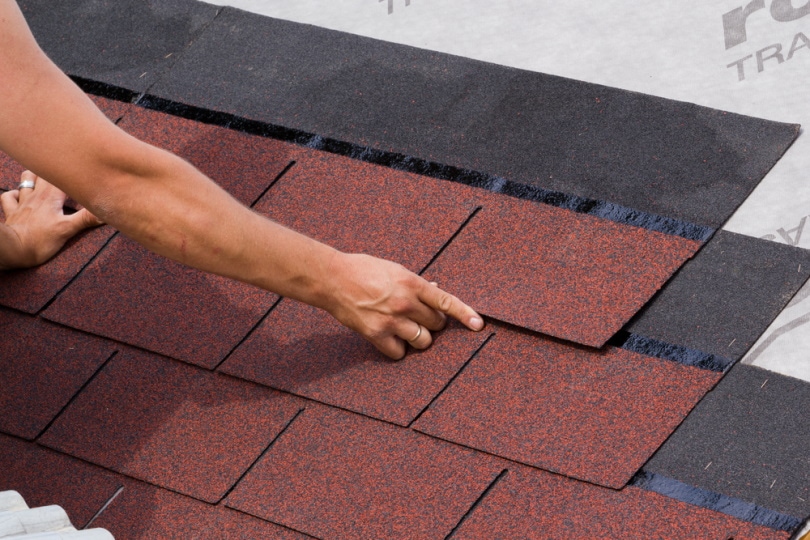Can You Burn Shingles? Risks, Tips, & FAQ
-
Chris Dinesen Rogers
- Last updated:

Roofing materials have evolved tremendously in the last century. From clay, wood, coal tar, and slate, the technology moved to asphalt in 1903 with the invention of asphalt shingles by Michigan roofing contractor Henry Reynolds.
The US Environmental Protection Agency (EPA) classifies roofing shingles as construction and demolition (C&D) debris. Sadly, a 2020 memo showed that nearly 85% of discarded asphalt products ended up in landfills. If you’re wondering whether it’s better to burn them instead, the answer is a resounding no. The reason is that it’s not safe or environmentally sound.
Toxic Ingredients
Only 11% of asphalt ends up as roof shingles. The majority is used for paving. While ingredients may vary, your average shingle contains a base of either glass or cellulose fibers covered with asphalt. While this material is a by-product of petroleum distillation, it also occurs in nature in deposits as bitumen. Mineral granules give it its distinctive texture.
Asphalt is a petroleum-based, man-made hydrocarbon. The term describes its chemical structure, consisting of hydrogen and carbon. Just like burning other fossil fuels, asphalt has the same concerns on all fronts. You’ll often see the terms asphalt and bitumen used interchangeably, although they are different materials.
Human Toxicity

Asphalt contains several chemicals, including sulfur and several non-metallic and metallic elements. Some of them are carcinogenic. Therefore, burning them can increase your risk of developing life-threatening diseases that could harm you, your family, and your pets. Of course, there are also hazards associated with any fire, particularly when dealing with fuel with high burn temperatures.
Wildlife Toxicity
Wildlife is equally at risk from the effects of burning asphalt. The residue is especially hazardous to aquatic organisms if water sources get contaminated. Remember, fire releases toxins that are chemically bound within the shingles. Surface runoff can poison wetlands, streams, and other water bodies. Sadly, metals and other chemicals can accumulate in the environment.
Environmental Hazards
One of the greatest risks of burning shingles is its contribution to greenhouse gas emissions and climate change. The global community has made significant strides in reducing emissions. Disposing of them in this environmentally unsound manner would undermine efforts to get the situation under control. Perhaps the next topic isn’t a surprise, given these facts.
The Legality of Burning Shingles

You’ll likely find that burning asphalt shingles is illegal where you live, whether it’s at the local or state front. Some areas, such as Ontario, only allow it with a permit. However, the average citizen can’t get permission to do it, leaving it something that only commercial users can do.
It’s worth noting what an asphalt fire causes. Yes, there’s the toxicity factor, but also consider the thick, black smoke. It’s a hot fire that will burn long, producing noxious odors, too. We suggest thinking about your neighbors before attempting it, even if it is legal in your area. Bear in mind that you’re not going to get rid of everything if you burn the shingles. Non-flammable materials will leave a mess to clean.
Fire Ratings
Manufacturers classify their shingles based on their fire ratings. Products labeled Class A may not burn at all. Remember that they act as protection against conflagrations. That’s particularly desirable if you live in areas prone to wildfires. Your idea to burn any extras after getting a new roof may fail to ignite. Of course, you must ask yourself if you want shingles that don’t have the best fire protection.
Reusing Asphalt Shingles

Fortunately, many manufacturers have tapped into repurposing asphalt shingles. Recycling and reusing have increased, but a lot of work is still necessary. Some outcomes for these materials include:
- Aggregate
- Fuel
- Pavement
- Other asphalt-containing products
Over 2.03 million tons of the more than 13.5 million tons found new uses and didn’t end up in a landfill. Awareness and perhaps economic pressure will spur an increase in the years to come.
Final Thoughts
Fire has been a human’s means of getting rid of waste maybe since we figured out how to use it. The fact remains that burning these materials harms the environment with potential consequences for people and all living organisms, no matter where they live. The same is doubly true of removing asphalt shingles by burning, which can have an even greater negative impact on climate change. We say, just don’t do it.
Featured Image Credit: 135pixels, Shutterstock
Contents

